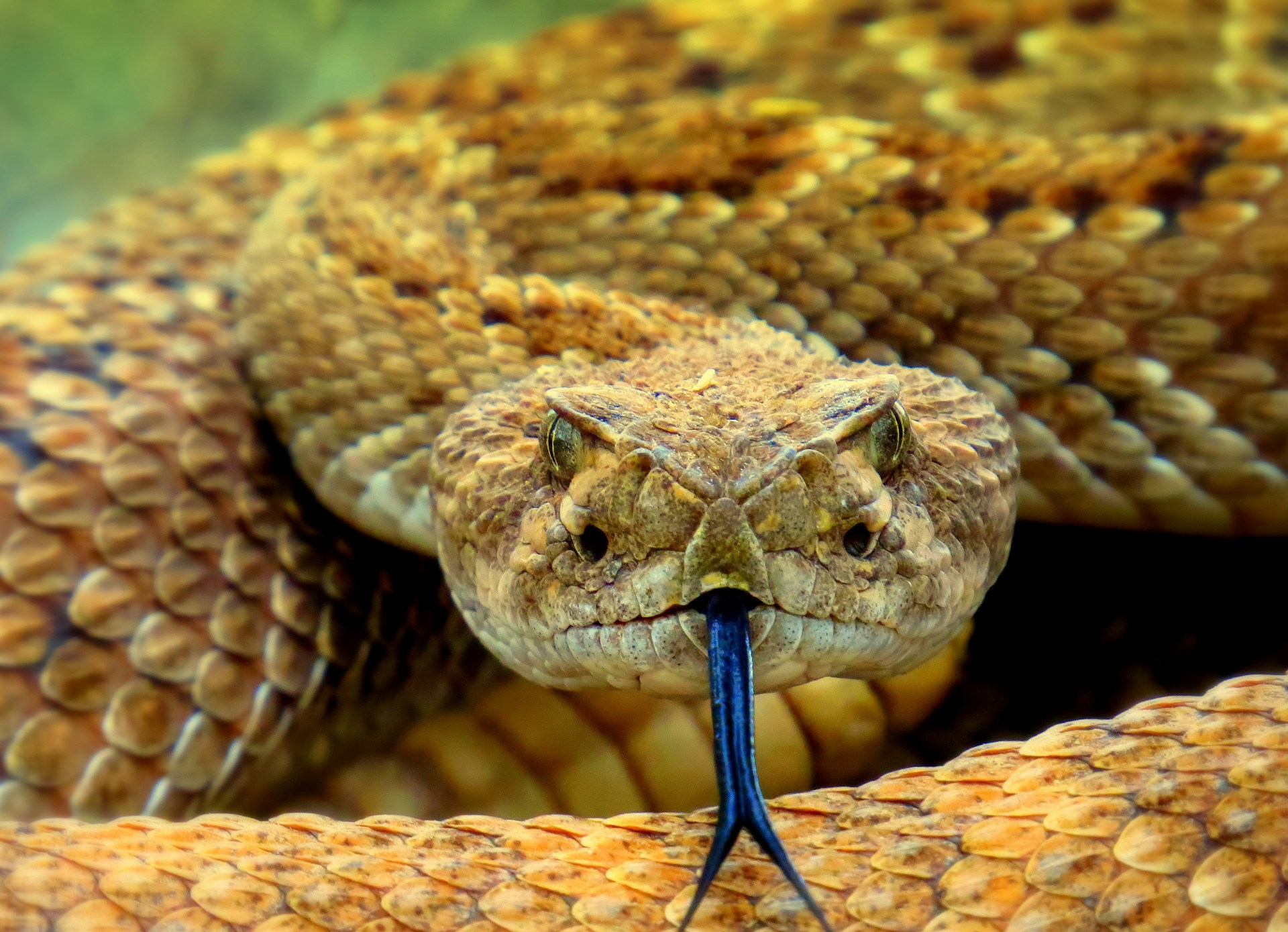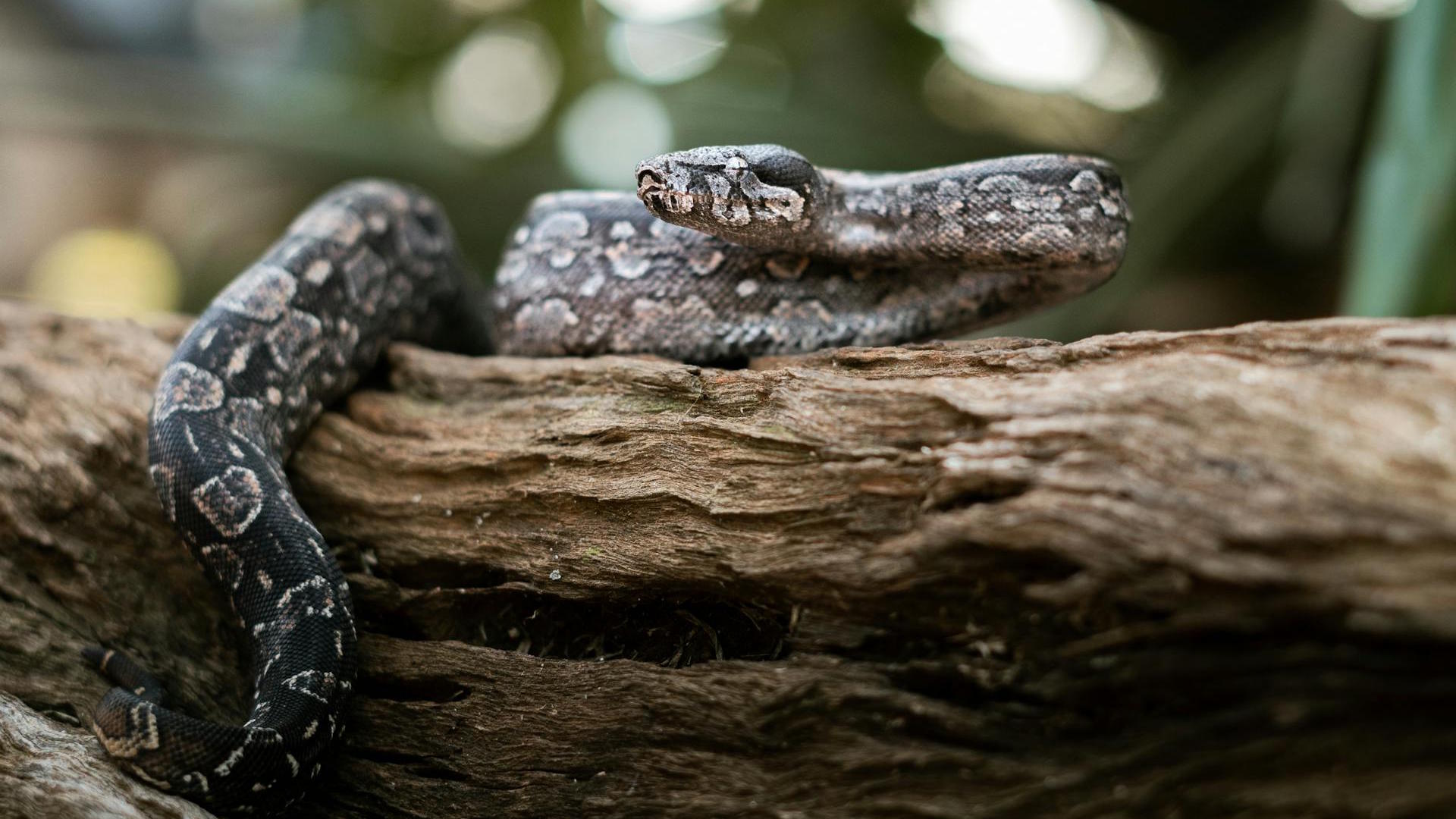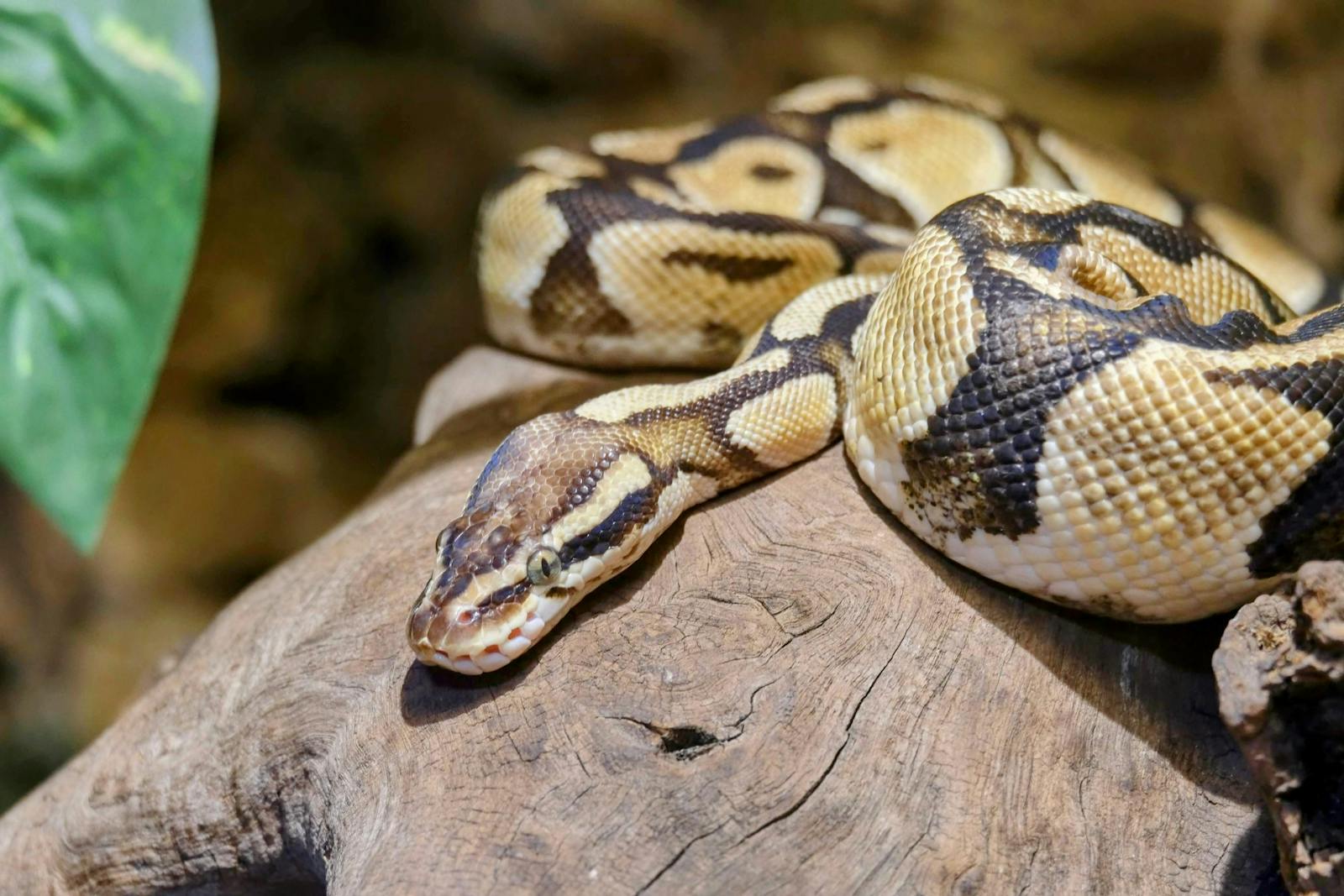In the diverse world of serpents, communication methods vary dramatically across species.
Perhaps one of the most recognizable warning signals in nature is the distinctive rattle of a rattlesnake—a sound that instantly alerts humans and other potential threats to keep their distance. Yet this acoustic warning system isn’t universal among venomous snakes.
While some species have evolved elaborate noise-making mechanisms to advertise their dangerous potential, others rely on stealth and silence as their primary survival strategy.
This fascinating dichotomy reflects millions of years of evolutionary adaptation to different environments, predators, and prey.
Understanding why some venomous snakes announce their presence while others remain silent offers remarkable insights into the complex interplay between natural selection, predator-prey relationships, and the diverse survival strategies that have allowed these remarkable reptiles to thrive across the globe.
The Evolutionary Purpose of Rattling

The distinctive rattle of rattlesnakes serves a primary evolutionary purpose: to warn potential predators and large animals that might accidentally step on them.
This warning mechanism evolved as a defense strategy that benefits both the snake and its potential threat.
For the snake, rattling provides a non-aggressive way to avoid confrontation without expending the energy needed to strike or the valuable venom it would use in an attack.
For potential threats, the unmistakable sound offers an opportunity to retreat before an encounter escalates to a dangerous bite.
Research suggests that rattlesnakes would rather not engage with larger animals that aren’t prey, as such encounters risk injury to the snake itself—making the rattle an elegant solution to a dangerous problem.
Evolutionary biologists consider this a classic example of aposematism, where an animal advertises its dangerous nature to discourage potential predators.
The Anatomy of a Rattlesnake’s Warning System
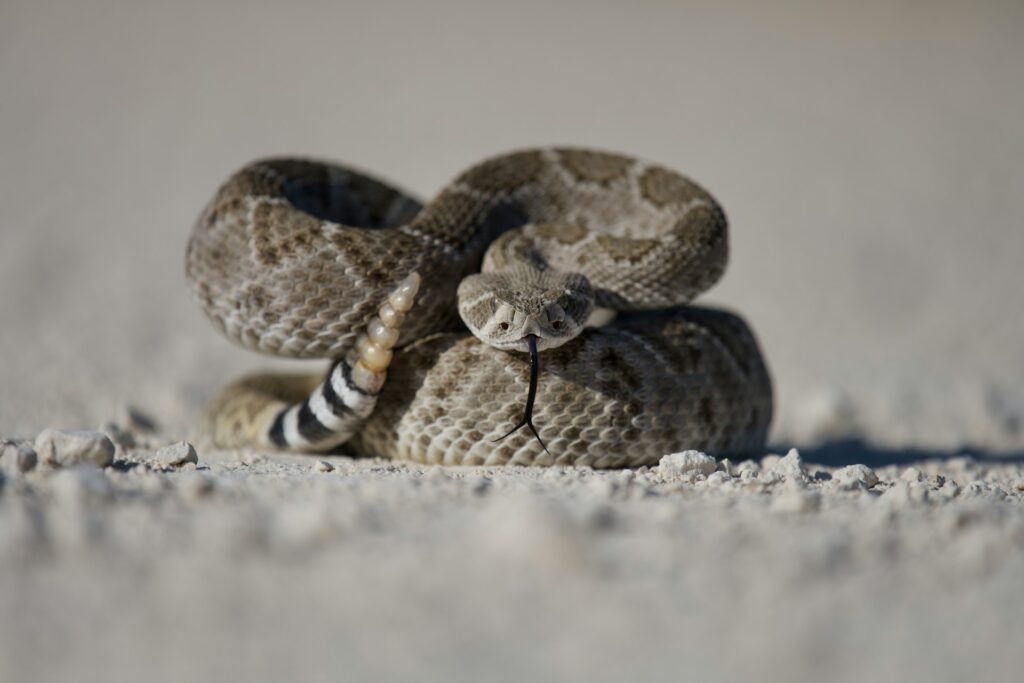
The rattlesnake’s iconic warning device consists of a series of interlocking, hollow keratin segments at the tip of its tail. These segments are actually modified scales that remain after each shed, with a new segment being added (typically) with each shedding cycle.
When the snake vibrates its tail muscles at high speeds—up to 90 times per second—these hollow segments knock against each other, creating the characteristic buzzing sound that can be heard from several meters away.
Contrary to popular myth, the number of segments doesn’t indicate the snake’s age, as segments can break off and the shedding cycle varies based on the snake’s growth rate and health.
The rattle structure is unique to the pit vipers of the genera Crotalus and Sistrurus, representing a specialized adaptation found nowhere else in the animal kingdom.
Interestingly, baby rattlesnakes are born with only a single segment called a “button,” which cannot yet produce the warning sound until after their first shed.
Silent but Deadly: Why Many Venomous Snakes Don’t Rattle
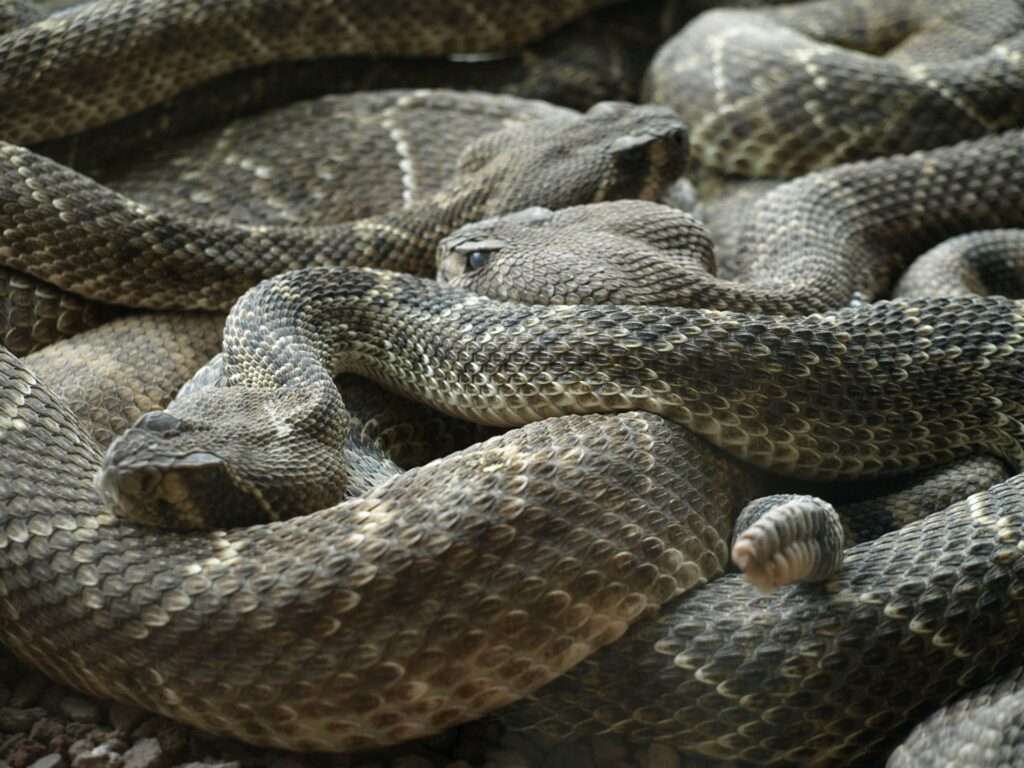
The majority of the world’s venomous snakes—including cobras, mambas, and sea snakes—lack rattling mechanisms, relying instead on stealth and camouflage as their primary defense strategies.
For these species, remaining undetected offers greater survival value than announcing their presence. Their hunting strategies often depend on surprise, allowing them to ambush prey that would otherwise flee if warned.
Additionally, many venomous snakes live in environments where the noise of a rattle would attract predators rather than deter them, creating a selective pressure against noisy warning mechanisms.
Some species, like the death adder, have evolved to be incredibly cryptic, with coloration and patterns that blend perfectly with forest floors, making them nearly invisible until it’s too late.
For these silent hunters, their venomous bite serves primarily as a hunting tool rather than a defensive mechanism, fundamentally altering the evolutionary pressures shaping their communication strategies.
Alternative Warning Systems in Non-Rattling Venomous Snakes

While they don’t rattle, many venomous snakes have evolved alternative warning displays to deter potential threats.
Cobras famously spread their hoods and rear up to appear larger when threatened, creating an unmistakable visual warning. Some species, like the king cobra, can raise nearly a third of their body length off the ground in this impressive display.
Many vipers and other venomous snakes produce warning hisses by forcefully expelling air through a modified glottis in their throat, creating a sound that most mammals instinctively recognize as threatening.
Other species employ dramatic body posturing—coiling tightly, flattening their heads to appear more triangular, or performing threat displays that involve mock strikes with closed mouths.
These diverse warning systems demonstrate convergent evolution, where different species independently develop similar solutions to the common problem of deterring predators without engaging in risky physical confrontations.
The Geographic Distribution of Rattling Species
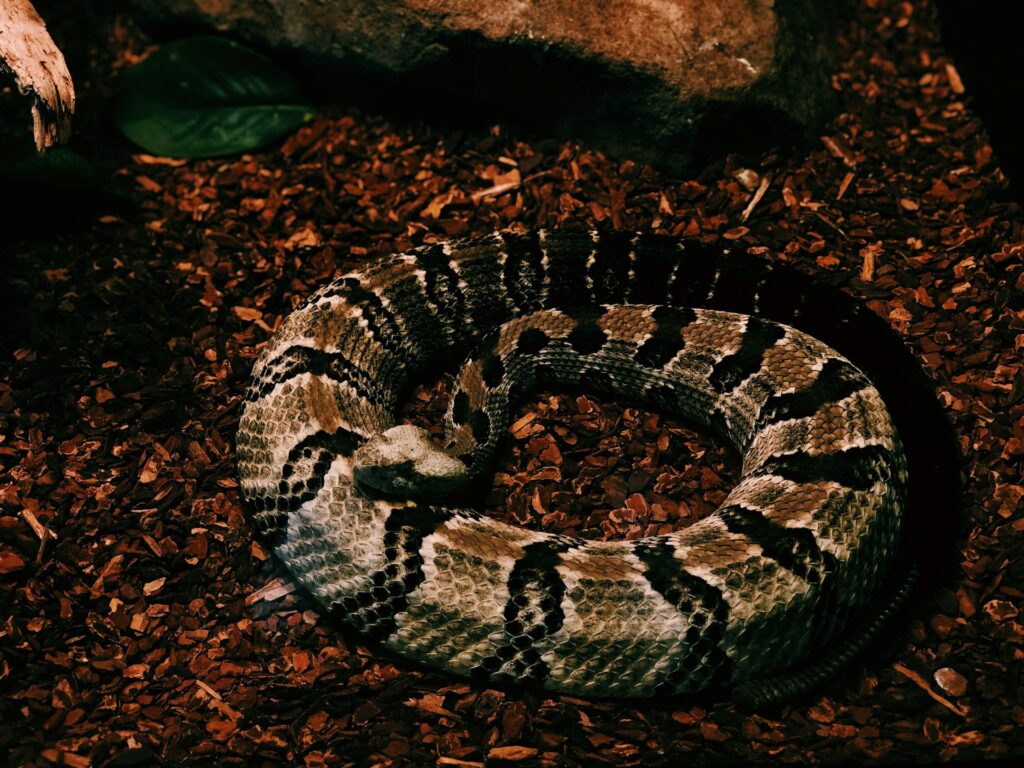
Rattlesnakes are found exclusively in the Americas, ranging from southern Canada to central Argentina, with the highest diversity concentrated in the southwestern United States and northern Mexico.
This limited geographic distribution explains why rattling as a warning mechanism isn’t more widespread among venomous snakes globally.
The evolution of the rattle is a relatively recent development in snake evolutionary history, occurring after the formation of the American continents.
Other continents host their own venomous snake species that evolved along different paths, developing alternative warning strategies or emphasizing stealth.
The diverse environments across the Americas—from deserts to grasslands to forests—have shaped variations in rattling behavior even among rattlesnake species.
Desert-dwelling species often have louder rattles that can be heard at greater distances across open terrain, while forest species may have quieter rattles adapted to their more enclosed habitats.
The Tactical Silence of Ambush Predators

Many venomous snakes that don’t rattle are specialized ambush predators, for whom silence is an essential hunting strategy.
These snakes typically position themselves along game trails or near prey habitats, remaining motionless for hours or even days while waiting for prey to come within striking distance.
Species like the Gaboon viper of Africa possess extraordinary camouflage that allows them to virtually disappear against the forest floor, their intricate patterns mimicking leaves, soil, and shadows.
For these snakes, any warning mechanism that reveals their location would directly contradict their primary hunting strategy, creating an evolutionary disincentive for developing noisy warnings.
Instead, these silent hunters invest in extremely potent venoms that can rapidly immobilize prey, minimizing the chance of losing a meal after striking.
Their strategy represents the opposite approach to the rattlesnake’s philosophy—rather than announcing “stay away,” they proclaim nothing at all, becoming nearly invisible until the critical moment of attack.
Mimicry: When Non-Venomous Snakes Fake a Rattle
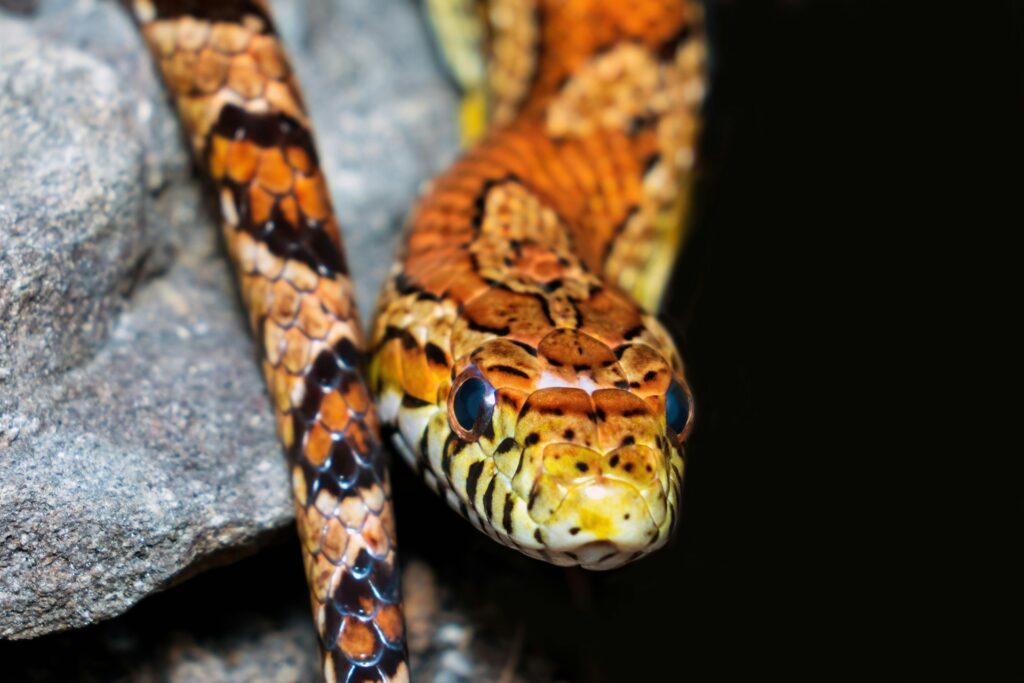
In a fascinating example of Batesian mimicry, several non-venomous snake species have evolved behaviors that imitate the warning rattle of their dangerous counterparts.
Species like the fox snake, corn snake, and bull snake will rapidly vibrate their tails when threatened, creating a buzzing sound when the tail contacts dry leaves or vegetation.
This mimicry capitalizes on the strong avoidance response that many predators have developed toward the sound of a rattlesnake.
Even without the specialized keratin segments of true rattlesnakes, these imposters can produce a convincingly similar sound that often causes potential threats to retreat.
The effectiveness of this mimicry demonstrates the powerful deterrent value of the rattlesnake’s warning system.
In regions where rattlesnakes and these mimics coexist, predators cannot easily distinguish between the genuinely dangerous rattler and its harmless imitator, providing the mimic with significant protection despite its lack of venom.
When Rattlesnakes Choose Silence
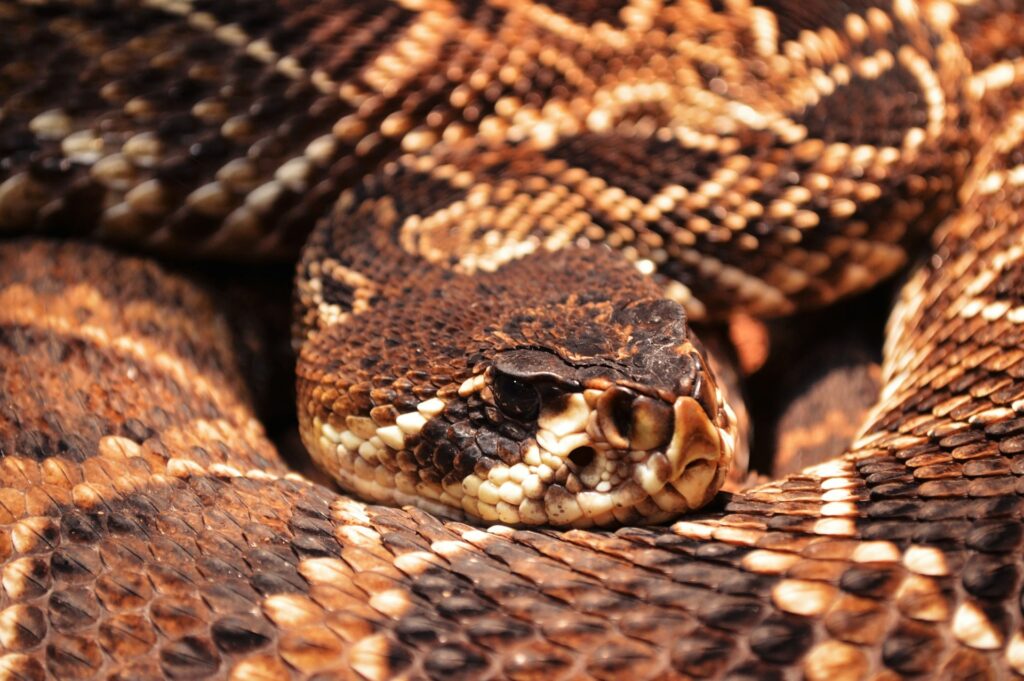
Intriguingly, even rattlesnakes don’t always use their signature warning system. Research has documented populations in certain areas—particularly those with high human traffic—that rattle less frequently or at reduced volume.
This behavioral adaptation may represent a response to human persecution, as rattling often leads humans to locate and kill these snakes.
On islands where rattlesnakes face heavy predation from animals that key in on the sound, some populations have evolved smaller, less effective rattles or reduced rattling behavior.
Additionally, individual rattlesnakes make situational decisions about when to deploy their warning—rattling vigorously when a large mammal approaches quickly but remaining silent when potential prey animals are nearby.
This strategic deployment of their warning system demonstrates the complex decision-making capabilities these reptiles possess, challenging simplistic views of snake behavior as purely instinctual.
The Energy Economics of Warning Systems
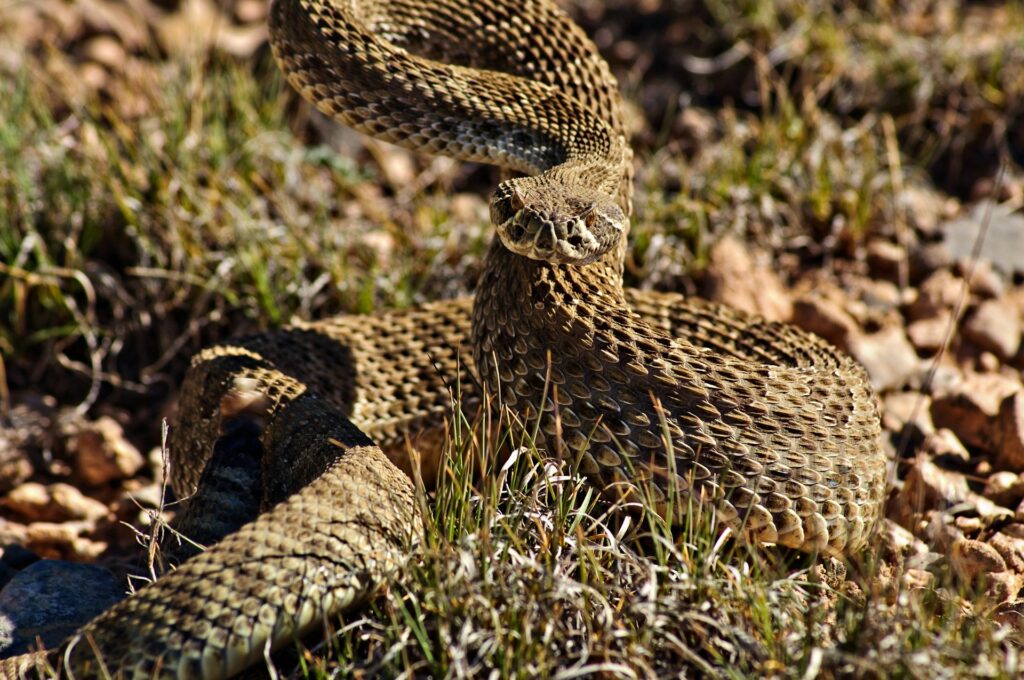
Producing warning signals, whether acoustic like rattling or visual like hood displays, requires significant energy expenditure for snakes.
The high-frequency muscle contractions that create a rattlesnake’s buzz can be metabolically expensive, especially for an ectothermic animal that carefully manages its energy budget.
This energy cost explains why not all venomous snakes have evolved such warning systems—the benefits must outweigh the costs for natural selection to favor their development.
For snakes in environments with few large, dangerous predators or accidental threats, the energy investment in developing and using warning systems might not provide sufficient survival advantage.
Additionally, venomous snakes that frequently encounter hostile predators immune to their venom (like certain birds of prey or mongooses) might gain little benefit from warning systems, as these specialized predators attack regardless.
The evolutionary calculus differs for each species and habitat, explaining the diverse approaches to predator deterrence observed across venomous snake species worldwide.
The Influence of Prey Type on Warning Behavior

A snake’s typical prey significantly influences whether it evolves warning behaviors like rattling.
Snakes that primarily hunt small mammals benefit from warning systems that prevent larger, non-prey animals from accidentally stepping on them. In contrast, snakes that primarily target birds, reptiles, or amphibians face different selective pressures that may not favor noisy warnings.
The rapid escape capabilities of birds, for instance, mean that snake species specializing in avian prey must prioritize stealth over warning.
Similarly, snakes that hunt other reptiles often rely on ambush tactics that would be compromised by warning signals.
The eastern diamondback rattlesnake’s diet consists largely of rabbits and rodents, making a warning system valuable as it prevents dangerous encounters with larger mammals while not significantly hindering its hunting success with small prey.
This relationship between diet and defensive strategy reflects the complex evolutionary trade-offs that shape snake behavior across different ecological niches.
Human Impact on Rattling Behavior
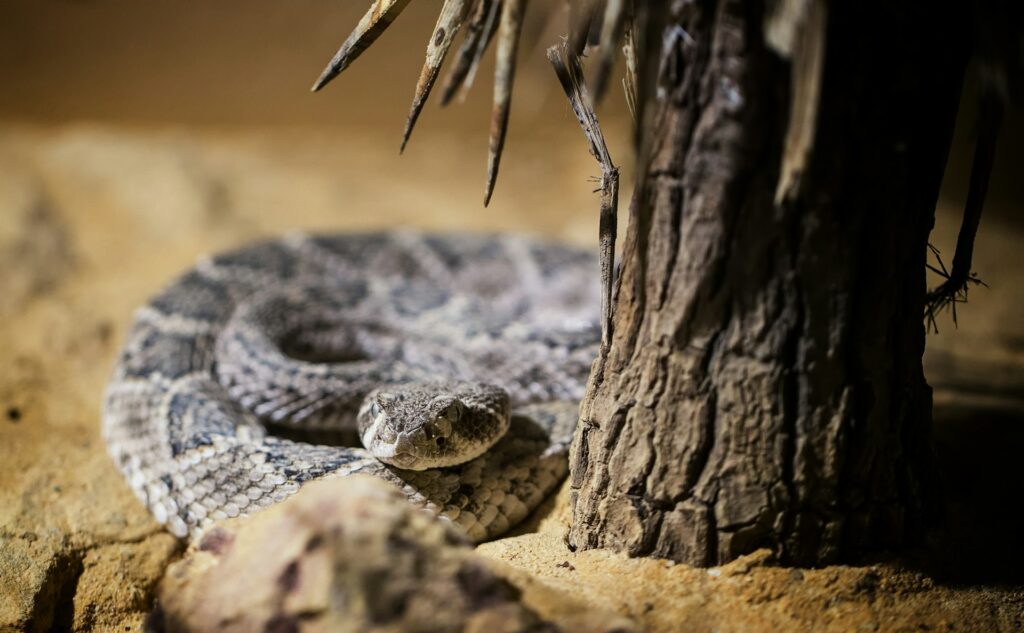
Human activities have begun to influence the evolution of rattling behavior in surprising ways.
In areas with high human traffic and persecution of rattlesnakes, researchers have observed populations with reduced rattling behavior or snakes that rattle at lower volumes than their counterparts in more remote areas.
This represents a remarkable example of rapid evolutionary change driven by human selection pressure.
A rattlesnake that announces its presence to humans often doesn’t survive to reproduce, creating selection for quieter individuals.
In South Dakota, researchers documented a population of prairie rattlesnakes that had developed a “quiet defense strategy” in response to decades of human persecution.
Some experts worry that this human-driven selection might eventually produce “silent rattlesnakes” that no longer warn before striking, potentially increasing dangerous human-snake encounters.
This phenomenon illustrates how human activity can drive evolutionary changes in wildlife behavior with potentially unforeseen consequences.
The Predator-Prey Arms Race and Warning Signals

The development of warning signals like rattling represents one move in an ongoing evolutionary arms race between predators and prey.
When rattlesnakes first evolved their warning system, it likely provided a significant survival advantage by deterring predators unfamiliar with the signal.
Over time, however, some predators—particularly specialized snake hunters like certain birds of prey, mongooses, or kingsnakes—learned to associate the sound with a potential meal rather than danger.
This counter-adaptation creates new selection pressure that might favor reduced rattling in some contexts.
Simultaneously, the effectiveness of the rattle against some predators continues to provide benefits that maintain the trait in most populations. This dynamic interplay between predator learning and prey defense creates a constantly shifting evolutionary landscape.
Snake species that remain silent may have experienced different trajectories in this arms race, finding greater survival value in crypsis than in acoustic warnings.
Future Evolution of Snake Warning Systems

As environments change due to human activity and climate change, the selective pressures on snake warning systems will likely shift in coming centuries.
Urbanization creates novel environments where traditional warning systems may become either more or less advantageous, potentially driving new evolutionary adaptations.
Some rattlesnake populations living near human development already show signs of decreased rattling behavior, suggesting rapid evolutionary responses to new threats.
Climate change may alter the distribution of both snakes and their predators, creating new ecological relationships that reshape the cost-benefit analysis of warning systems.
The plasticity of snake behavior—their ability to modify warning behaviors based on experience—may allow for faster adaptation than genetic evolution alone would permit.
These ongoing changes offer scientists a rare opportunity to observe evolution in action, providing insights into how defensive strategies develop and change in response to environmental pressures.
Conclusion
The diversity of warning strategies among venomous snakes—from the iconic rattle to complete silence—illustrates the remarkable adaptability of these ancient reptiles.
Each species’ approach reflects millions of years of evolutionary fine-tuning to specific environmental challenges, predator pressures, and hunting strategies.
Where rattlesnakes evolved in environments where warning potential threats provided survival advantages, other venomous species found greater success through camouflage and stealth.
This diversity reminds us that there is rarely a single “best” evolutionary strategy—success depends entirely on context.
As humans continue to alter snake habitats worldwide and climate change reshapes ecological relationships, these sophisticated warning systems will face new selective pressures.
By understanding the complex factors that have shaped these diverse communication strategies, we gain not only appreciation for these often-misunderstood reptiles but also insights into the broader patterns of adaptation and survival in the natural world.

